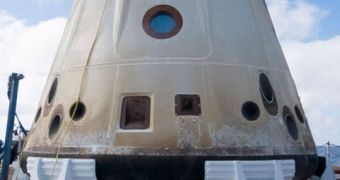At an industry forum that took place on Friday, September 16, officials at the American space agency again emphasized their need for new spacecraft, capable of reaching the International Space Station (ISS) with both cargo and astronauts.
At this time, NASA is already engaged in efforts to ensure that this will happen as soon as possible, but the road is treacherous and laden with obstacles, setbacks and delays. The agency needs to strike a careful balance between moving swiftly ahead and remaining true to its safety measures.
At the meeting, representatives explained that the ISS is put more and more at risk with every year of delay NASA experiences in this effort. They added that the very participation of the United States in this extraordinary international endeavor hangs in the balance.
[ADMARk=1]Given that the space agencies involved in the project now plant to keep the massive space laboratory in operation until at least 2020, the American space agency obviously cannot allow for its participation to be intermediated by the Russian Federal Space Agency (RosCosmos).
The gap in space-related capabilities the US is currently registering was triggered by the retirement of the orbiter fleet, and the shutdown of the Space Shuttle Program this July, after three decades of continued operations and support to space exploration.
At this point, NASA relies on its Russian partner to secure spots for its astronauts on Russian Soyuz space capsules at an exorbitant price per seat. But the Americans resent that, so the American agency is working with private corporations towards covering this gap.
Companies such as Space Exploration Technologies Corporation (SpaceX) and Orbital Sciences Corporation (OSC) – among others – receive NASA funds under the Commercial Orbital Transportation Services (COTS) program.
The goal is to produce rockets and spacecraft that will be able to deliver cargo, and ultimately astronauts, to the ISS on a regular basis, and for a low price. The idea here is to untie NASA's hands so that the agency can begin to conduct advanced space exploration, to asteroids and Mars.
“”Every year we do not have a commercial crew capability, the ISS is at risk. We have to make sure industry has what it needs to be successful,” NASA Headquarters acting director of commercial spaceflight development Philip McAlister told attendants at the forum.
“We continue to send money overseas to foreign providers to provide crew transportation services to ISS. Compare that to where we are in cargo – three providers today, soon to be five providers for cargo. We have one provider today for crew. I think that somehow doesn't make sense,” he adds, quoted by Space.
While SpaceX's Falcon 9 rockets and Dragon capsules, combined with OSC's Taurus II rockets and Cygnus capsules, have the highest chances of making the final cut as NASA selections to serve the ISS, several years will pass until the agency can entrust the companies with astronauts.
However, officials had a positive attitude at the forum, saying that things are now progressing smoothly at NASA. Earlier this week, the agency announced plans to build the Space Launch System (SLS) heavy-lift rocket, which will be used for space exploration.
The massive delivery system will work with the Orion Multi-Purpose Crew Vehicle (MPCV), so that NASA can reach a near-Earth asteroid by 2025 and Mars by the mid-2030s. These missions will be manned, in accordance to President Barack Obama's 2010 National Space Policy.
“I want to stress that together with our capabilities to do deep space exploration – Orion and [SLS], we now have an integrated, complimentary strategy for NASA for exploration. We definitely want to get moving forward,” McAlister concluded.

 14 DAY TRIAL //
14 DAY TRIAL //